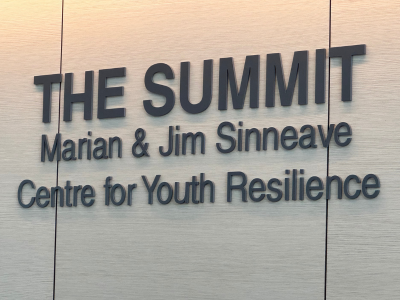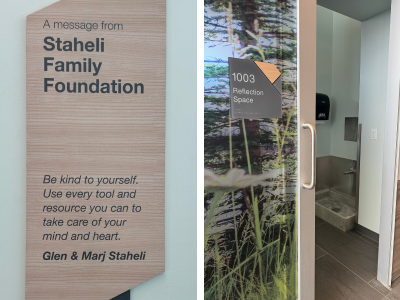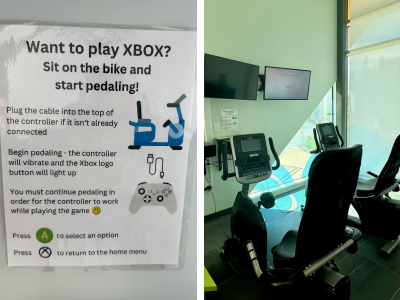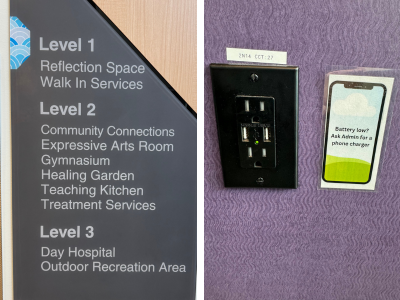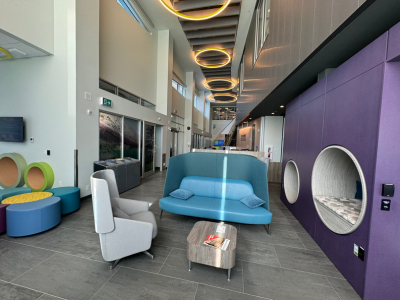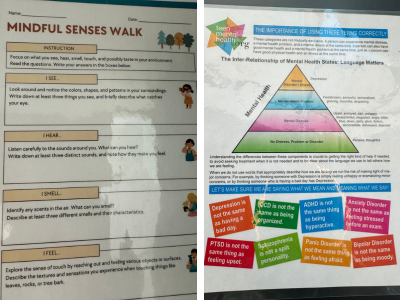An update from our CEO Chelsea, who is on a Churchill Fellowship. To stay up to date with her learnings, sign up to an occasional newsletter.
Among the last places I visited in Canada were two child / youth focussed facilities, purposefully designed to provide a safe space where young people could access the wrap-around support they needed to help them start their recovery from domestic and family violence.
Luna Child Youth Advocacy Centre brings together an onsite, multidisciplinary team that combines expertise from Alberta Health Services, Alberta Justice, Calgary Police Service, Children and Family Services, and the Royal Canadian Mounted Police. In addition, there is victim support, including service dogs and court liaisons all in one location where children who are abused can come and access support.
I was fortunate to spend time with Darren Smith, Staff Sergeant of the Calgary Police Assault Service, which includes a child Risk Response Team who work with social workers; a Vulnerable Infant Response team; and a Prenatal Outreach Support team. I asked him what makes the Luna Centre so effective and he highlighted:
- Senior buy-in across all agencies, starting with the people who formed it, who were very innovative;
- A genuinely collaborative approach, underpinned by MOUs that makes the obligations clear;
- Holding one another / other agencies accountable to those obligations;
- Daily triage meetings – case conferences – to agree action on the most pressing cases;
- Sharing information relevant to the child / family – enabled through legislation; and
- Access to reliable data / information, which means that decisions are evidence-based.
Given his experience, I asked what he thinks would be needed for an effective service to support youth:
- Trauma-informed approach to all engagements with the young person;
- Training for those working with youth in how to do interviews, build rapport, asking open-ended questions from a trauma-informed practice;
- Active therapy;
- Early and ongoing intervention – “If you look back in (the worst offenders’) history, anecdotally like I would say 95% of them or more. It started with child abuse or neglect. That’s where it started. And they went down that path. So, if we can get into them early, we can actually stop that from happening.”
- The right setting for the engagement – e.g. school vs home – based on what we know about the child’s situation – which is where the data and information sharing becomes so important;
- A welcoming environment that is somewhere that children want to be and feel safe to come. Darren shared that some young people keep coming back, asking to hold birthday parties or other significant life celebrations at Luna, as it is where they feel safe and supported;
- Connected services that can share intel and track engagements / outreach;
- Cultural understanding and education programs;
- Referrals out to external support if it can’t be done in-house – e.g. specialised services for teen mothers – holistic, wrap-around services and support, for example.
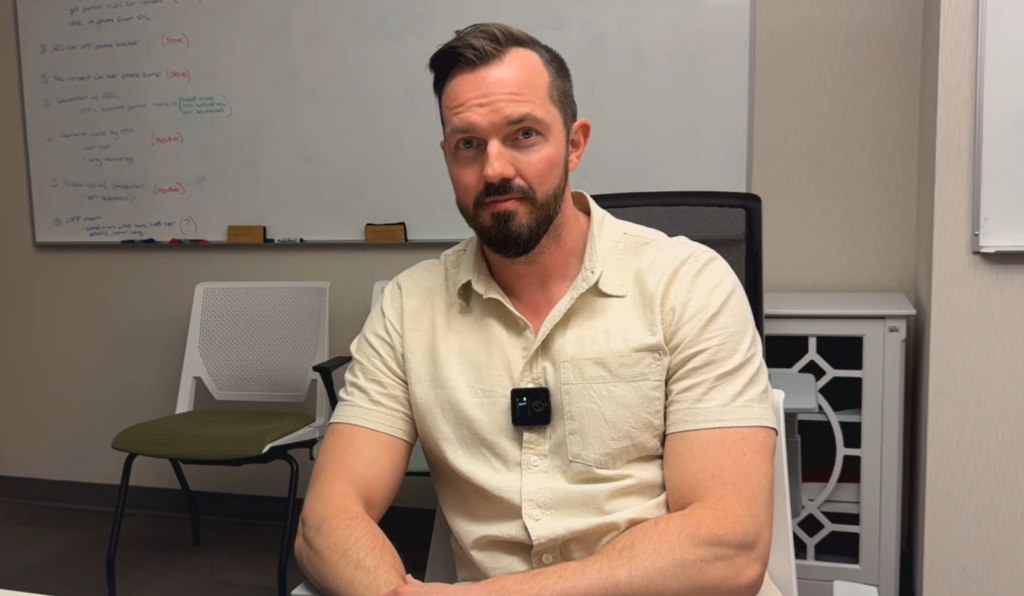
Dedicated spaces, tailored to young people
I also had the opportunity to visit The Summit – Centre for Youth Resilience. I was blown away and so inspired by this incredible facility, which offers therapeutic support through a day hospital and community-based treatment, including walk-in services for anyone under 18. The environment is welcoming and non-judgmental. I was in awe of the therapeutic playground and gaming bike stations! Such innovative ways to engage youth in their recovery process. Brilliant! 💡
The Summit was easily accessible for youth, thoughtfully designed and focussed on mental health. The range of ways you could engage in mental health support enabled choice and relevancy for youth (e.g. a suicide safety plan for an eight year old vs a suicide safety plan for a 17 year old).
As someone passionate about creating healing spaces, I’m excited to incorporate some of The Summit’s physical design and practices into our Sanctuaries.
